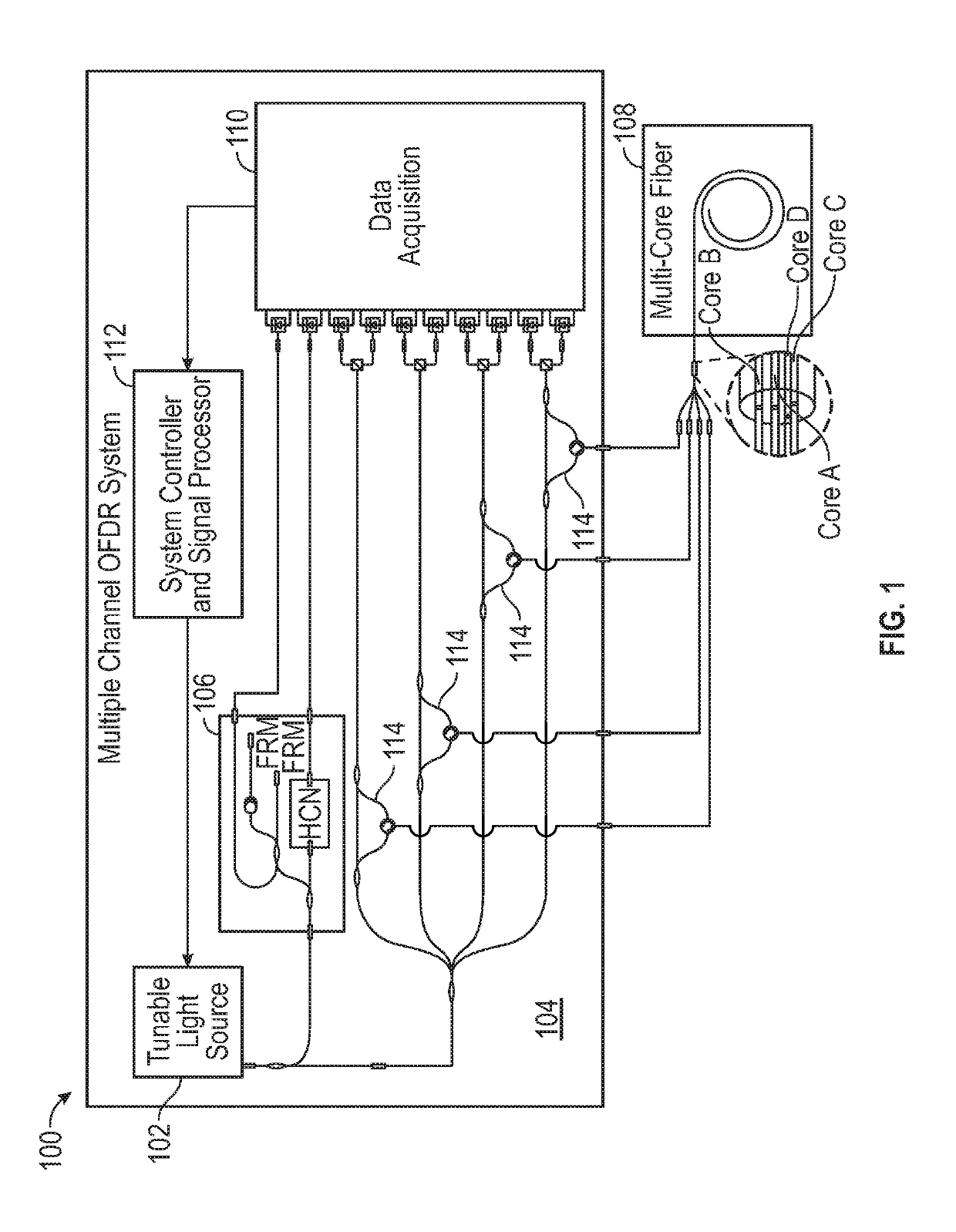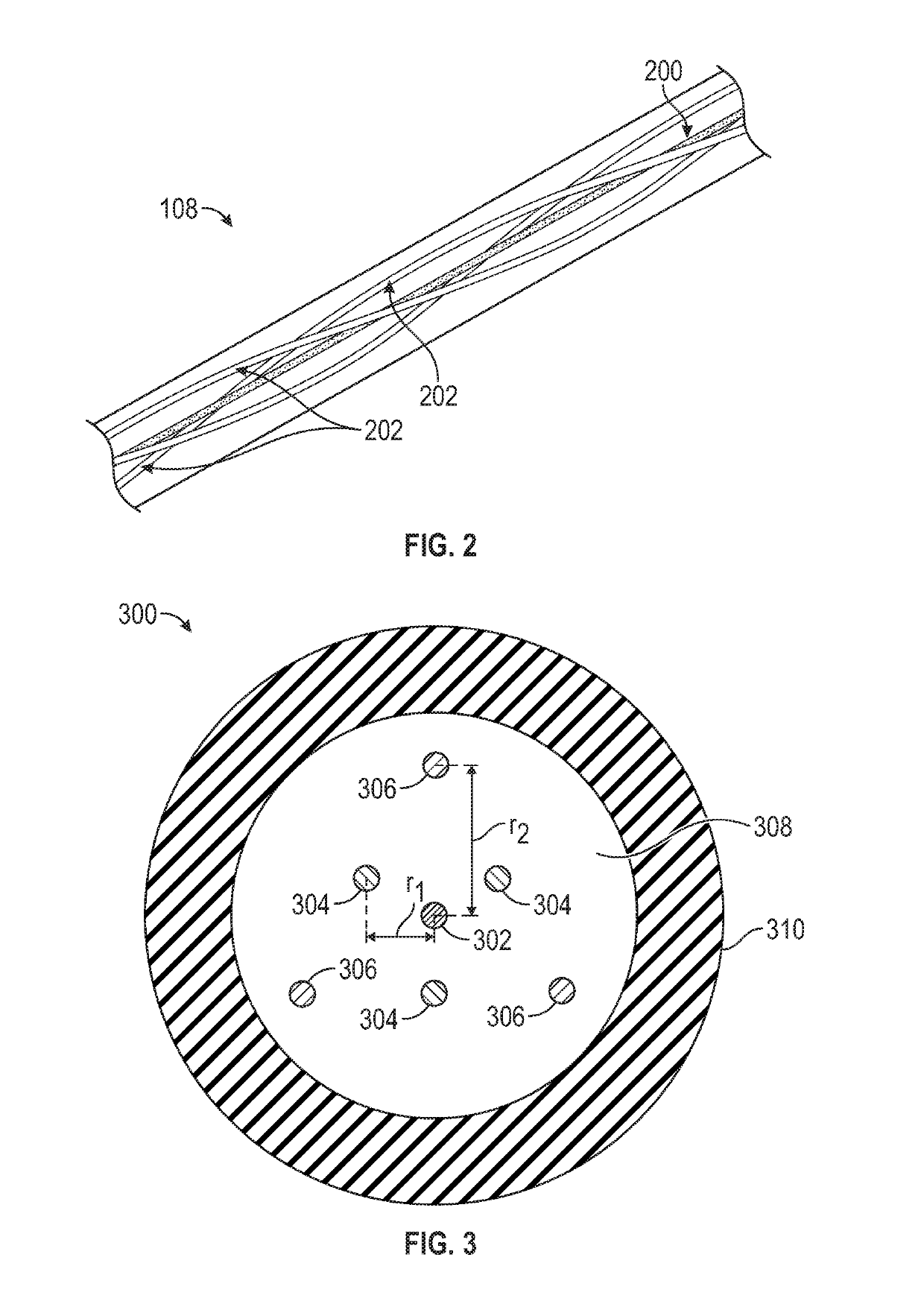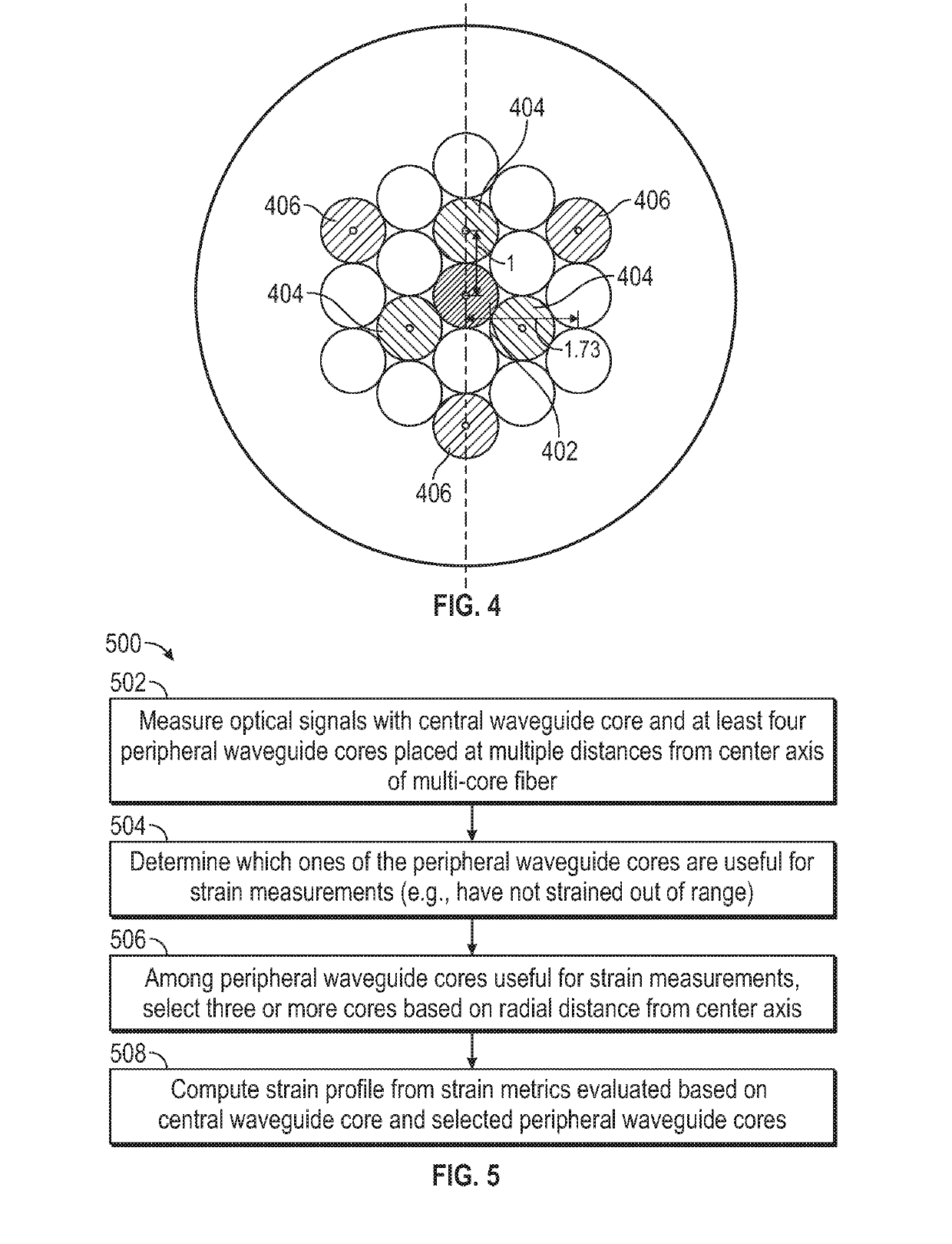Shape sensing with multi-core fiber sensor
a fiber sensor and multi-core technology, applied in the field of multi-core optical fibers, can solve the problems of low accuracy and achieve the effect of significantly reducing the loss of fiber bending and low bend loss
- Summary
- Abstract
- Description
- Claims
- Application Information
AI Technical Summary
Benefits of technology
Problems solved by technology
Method used
Image
Examples
Embodiment Construction
[0020]FIG. 1 illustrates an example fiber-optic shape-sensing system 100 in accordance with various embodiments. This example system 100 is based on OFDR and swept-wavelength interferometry, and includes a tunable light source (often a coherent light source such as a laser) 102, an interferometric interrogator network 104, a laser monitor network 106, a multi-core optical shape-sensing fiber 108 (herein also more briefly referred to as “multi-core optical fiber” or “shape-sensing fiber”), an acquisition unit 110 including data acquisition electronics, optical fiber that optically couples the aforementioned components, and a processing facility 112 serving as system controller and data processor. While depicted as a single unit, the processing facility 112 may be implemented with one or more devices, and may include special-purpose electronic circuitry (e.g., a hardwired circuit, digital signal processor, field-programmable gate array, or the like) and / or a general-purpose processor ...
PUM
 Login to View More
Login to View More Abstract
Description
Claims
Application Information
 Login to View More
Login to View More - R&D
- Intellectual Property
- Life Sciences
- Materials
- Tech Scout
- Unparalleled Data Quality
- Higher Quality Content
- 60% Fewer Hallucinations
Browse by: Latest US Patents, China's latest patents, Technical Efficacy Thesaurus, Application Domain, Technology Topic, Popular Technical Reports.
© 2025 PatSnap. All rights reserved.Legal|Privacy policy|Modern Slavery Act Transparency Statement|Sitemap|About US| Contact US: help@patsnap.com



